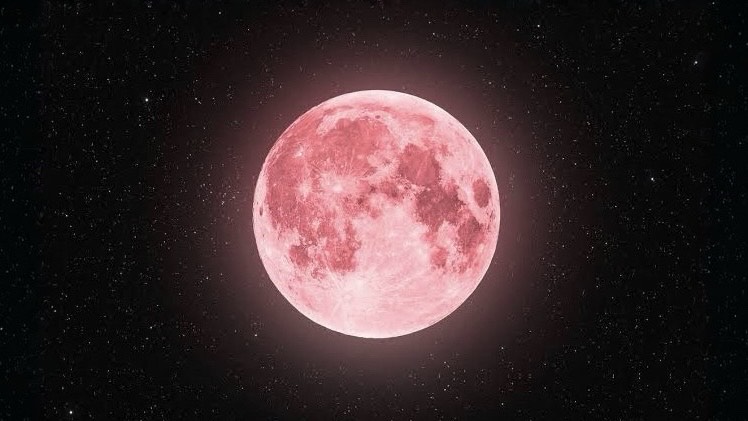A pretty rare full moon is happening tonight, and it’s not your average one. It’s called the ‘strawberry moon’.
While it will look reddish, the name actually comes from the strawberry harvest season.
But what does make this one special is the timing. It’s showing up during something called a major lunar standstill, which only comes around every 18.6 years.
So if the skies are clear, you’ll want to look up. This exact view won’t happen again until 2043.
This one hits its peak in the middle of the night
The strawberry moon will reach its peak on Wednesday, June 11, at 3:44 a.m. ET, NASA said.
Pretty early. Unless you’re up before sunrise, you probably won’t catch it at that exact moment.
You’ll actually want to catch it the night before
Since the moon is going to be at its peak so early during the day, the best time to see it is the evening before, on Tuesday, June 10, according to USA TODAY.
The strawberry moon will rise in the southeast around dusk on Tuesday, June 10, and should be visible to most viewers.
However, the moon will dazzle backyard astronomers everywhere in the evening on Tuesday, June 10, as this will be the best time to see the spectacle as it rises during dusk, according to LiveScience.
So if you’re planning to watch, Tuesday evening is really your best bet.
It’s gonna look smaller and dimmer than usual

Though it’ll be a full moon, it could look about 14% smaller and 30% less bright than usual.
NASA says that’s because it’s sitting at the farthest point in its orbit from Earth, something they call a ‘micromoon’.
So yeah, this one’s a bit more subtle. But that’s part of what makes it cool.
Expect a warm red or orange glow
If the sky’s clear, the moon might have a soft red or orange glow.
It’ll be sitting low on the horizon, which means the light passes through more of Earth’s atmosphere. That’s what gives it that orange or yellowish tint.
The name makes it sound like it’ll be bright pink, but nuh-uh. Still, depending on the conditions, you could see a gentle reddish shade as it rises or sets.
Where the strawberry moon name comes from
The ‘strawberry moon’ is the colloquial name for June’s full moon, a term originating from Native American tribes who marked the time when wild strawberries reached peak ripeness.
So yeah.. the name’s all about timing, not color.
A rare moon moment thanks to lunar standstill
This year’s ‘strawberry moon’ has something else going on, too. What makes it stand out is that it lines up with something called a ‘major lunar standstill’.
That’s part of an 18.6-year cycle, and it happens when the moon swings way up north or south in the sky because of the sun’s pull.
So you won’t see the moon hang this low in the sky again for nearly two decades.
Best spots to see it clearly
Since the moon will sit super low, you’ll want to find a spot where the eastern horizon is wide open and not blocked by buildings or trees.
It’ll be visible all across the U.S., but for the best view, clear skies and dark surroundings really help. The less light pollution, the better.
Rural areas, high elevations, and open fields or waterfronts with a clear eastern view are ideal. Urban residents may want to seek local parks or other open areas to get the best vantage point.
In short, find a spot with a wide, clear view of the eastern sky and get away from city lights if you can.
Last year’s strawberry moon wasn’t quite like this
The previous strawberry moon appeared on June 21, 2024. While similar in name and timing, the 2024 event did not coincide with the lunar standstill effect that makes the 2025 appearance visually unique.
So even though we had one just last year, it didn’t come with this rare alignment.
July’s full moon won’t be the same
The next full moon after the strawberry moon will rise on July 13, 2025. Referred to as the ‘buck moon’, it is named for the time of year when deer antlers are growing rapidly.
Like its June predecessor, the July full moon will offer another opportunity for night sky gazing, but it won’t feature the same low-horizon prominence.
This low, orange-tinted one won’t happen again for a long while.
We won’t get another like this until 2043
The full moon on June 11 will be as large and low in the sky as any full moon will appear until 2043, according to the Weather Channel.
So if you’re even slightly into stargazing, this is the one to catch.

















































